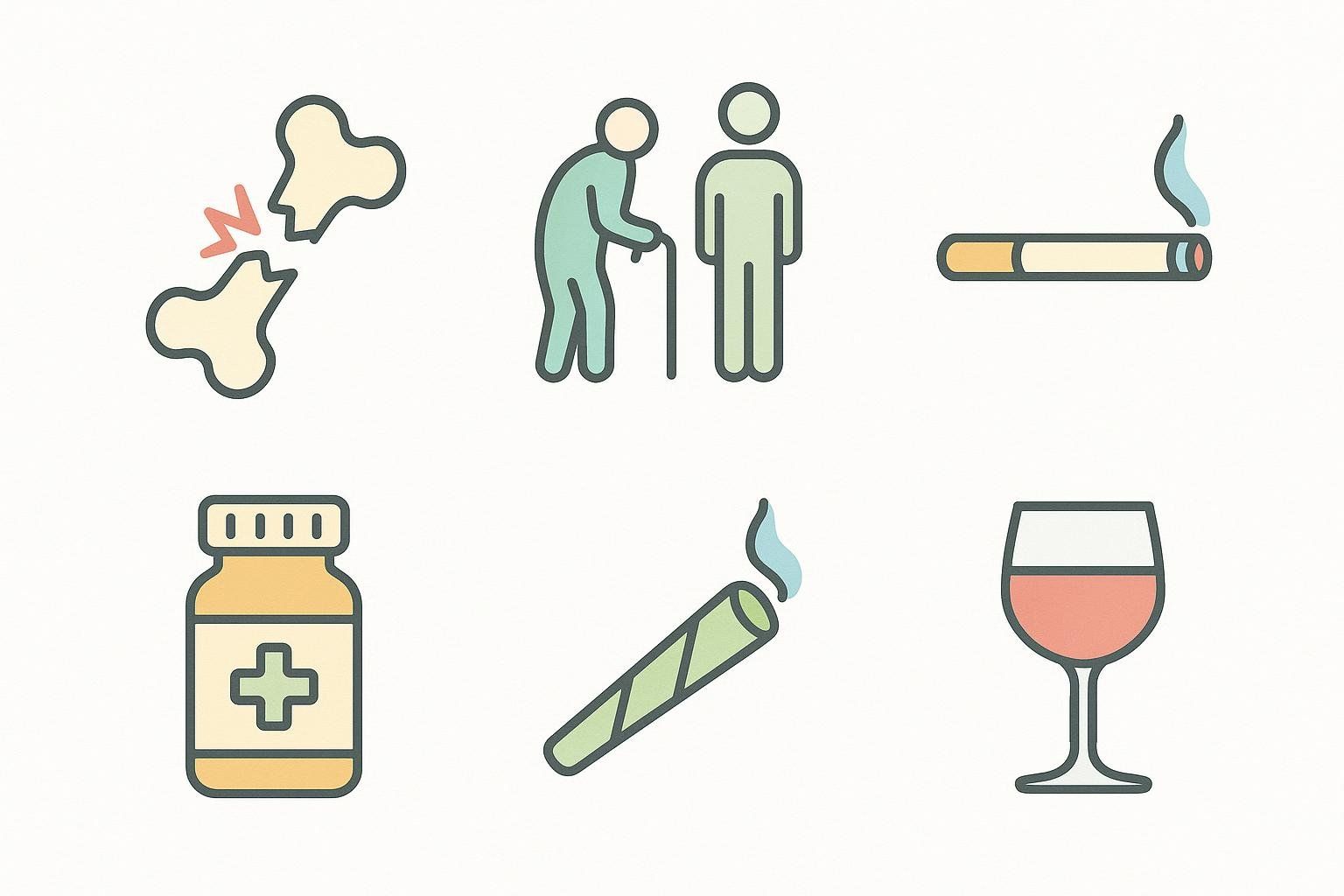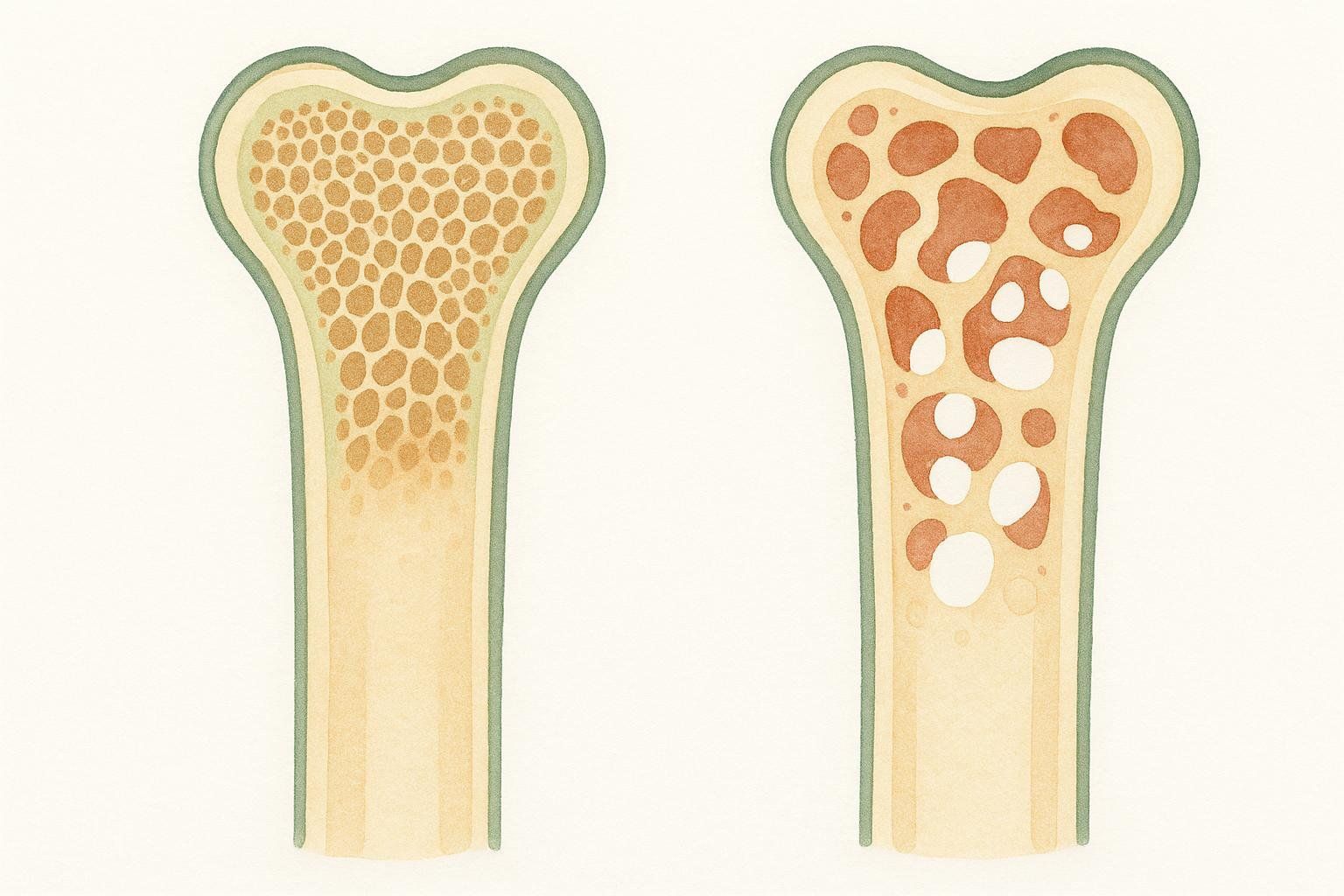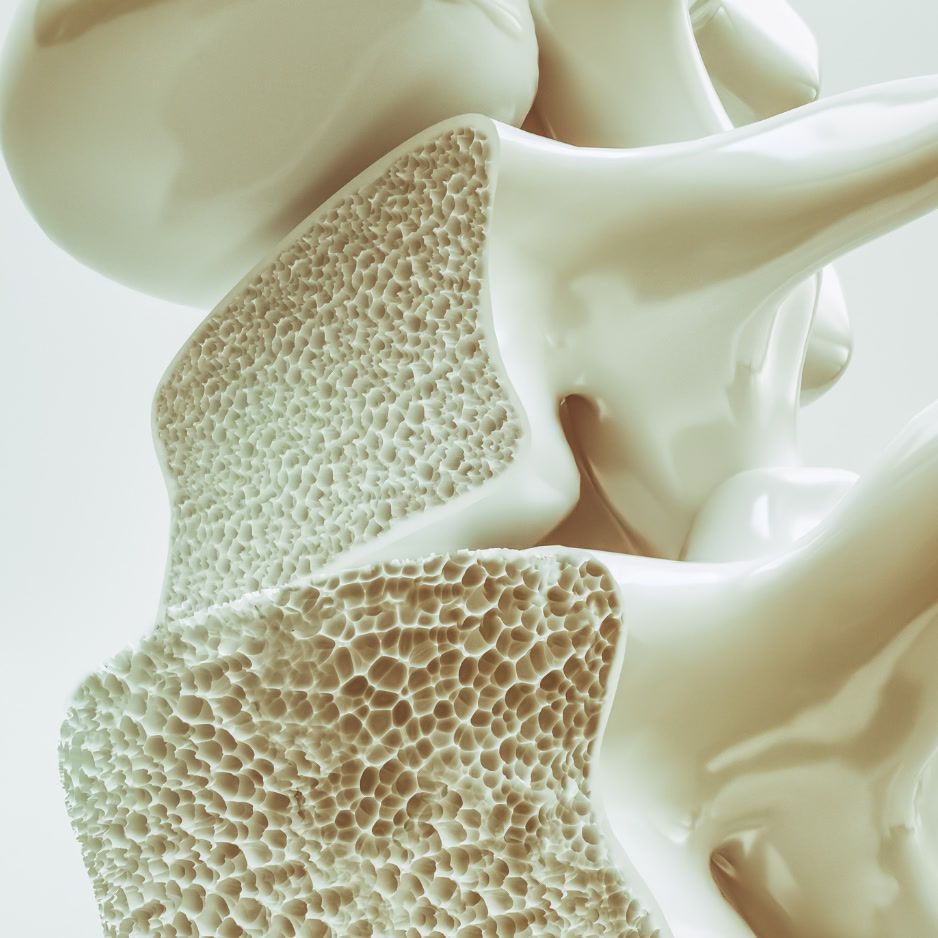Fracture Risk Assessment Tool: How to Use FRAX

Fracture Risk Assessment Tool: How to Use FRAX
Looking for a validated way to estimate your personal fracture risk? The FRAX fracture risk assessment tool predicts your 10-year probability of a hip fracture and a major osteoporotic fracture (spine, forearm, hip, or shoulder) using age, clinical risk factors, and optionally femoral neck bone mineral density (BMD) from a DXA scan. It’s calibrated for many countries and is widely embedded in osteoporosis guidelines worldwide (developed at the WHO Collaborating Centre, University of Sheffield). Learn more about FRAX’s development and global validation.
You can access the official calculators here:
- FRAX (University of Sheffield)
- FRAXplus Calculation Tool (adds refinements like falls, glucocorticoid dose, and TBS)
This guide provides a plain-language walkthrough of how the tool works, how to interpret your results, and how BodySpec’s scans can support your bone-health plan.
What is FRAX?
FRAX is a computer-based model that estimates your 10-year probability of hip fracture and major osteoporotic fracture using clinical risk factors and, optionally, femoral neck BMD. The core model was derived from large population cohorts across Europe, North America, Asia, and Australia, and is calibrated to country-specific fracture and mortality data.
You can run FRAX with clinical factors alone or add your femoral neck BMD to improve precision. Learn more on the University of Sheffield FRAX site.

Key inputs include age (40–90 years), sex, height, weight, prior fragility fracture, parental hip fracture, current smoking, long-term oral glucocorticoid use, rheumatoid arthritis, secondary causes of osteoporosis, and alcohol intake of ≥3 units/day. Adding femoral neck BMD (g/cm² or T-score) refines the estimate—see the FRAXplus calculator inputs—and a 2010 review of the FRAX model provides additional clinical context.
Output: FRAX reports two numbers—your 10-year probability (%) of hip fracture and of “major osteoporotic fracture” (MOF: clinical spine, forearm, hip, or shoulder) (FRAX site).
Step-by-step: How to use FRAX (with or without BMD)
-
Pick your country model
FRAX is calibrated by country to reflect local fracture and mortality rates. Choose your country before entering data (FRAX). -
Enter demographics
Age (40–90), sex, height, and weight. FRAX uses these to estimate BMI if BMD isn’t provided (FRAXplus calculator). -
Check your clinical risk factors

- Prior low-trauma fracture (after age ~40–50)
- Parent fractured hip
- Current smoking
- Long-term oral glucocorticoid use
- Rheumatoid arthritis
- Secondary osteoporosis (e.g., type 1 diabetes, hyperparathyroidism)
- Alcohol ≥3 units/day
(See full list and definitions on the FRAXplus calculator).
-
Optional: Add femoral neck BMD
If you have a recent diagnostic hip/spine DXA, enter your femoral neck BMD (or its T-score) to improve accuracy (FRAX site). If not, FRAX will still calculate risk using BMI and the clinical factors. -
Review your results
You’ll see two percentages: 10-year risk of hip fracture and 10-year risk of MOF. Save or export your results. FRAXplus accounts offer easy PDF export and saved histories.
How to interpret FRAX results (and typical treatment thresholds)
Your percentages are probabilities, not guarantees. Clinicians often use FRAX alongside bone-density testing and clinical judgment to decide on next steps. In the United States, many professional groups consider initiating pharmacologic therapy when the 10-year hip fracture probability is ≥3% or the 10-year major osteoporotic fracture probability is ≥20%. These thresholds are reflected in National Osteoporosis Foundation–aligned guidance. Further detail is available in a 2010 review of the FRAX model and in this overview of how guidelines use FRAX.
Important: Intervention thresholds vary by country and guideline. Always discuss your result with your clinician, who will consider your full medical picture.
FRAX limitations—and how FRAXplus refines risk
The original FRAX model treats several risks as simple yes/no inputs and assumes an average glucocorticoid dose. It also doesn’t directly incorporate factors like how recent a fracture occurred, number of prior fractures, falls in the last year, discordance between spine and hip BMD, or measures of bone microarchitecture. These limits can lead to underestimation in certain patients (see research on FRAX limitations).
FRAXplus offers pragmatic adjustments for:
- Recency of fracture
- Higher daily glucocorticoid dose (>7.5 mg prednisolone equivalent)
- Type 2 diabetes duration
- Trabecular Bone Score (TBS)
- Falls in the prior year
- Hip axis length (HAL)
- Concurrent lumbar spine BMD when it differs from the femoral neck
These adjustments can meaningfully shift probabilities and improve individual risk stratification (FRAXplus beta feature overview).
An important consideration: In people with vertebral fractures identified on Vertebral Fracture Assessment (VFA), standard FRAX may underestimate risk; study-derived multipliers improved calibration in this group (as the 2023 JAMA study showed).
Who should use a fracture risk assessment tool—and when to get screened

- Women 65+: The U.S. Preventive Services Task Force (USPSTF) recommends bone-density screening; FRAX may be used with or without BMD during evaluation (according to USPSTF guidance).
- Postmenopausal women <65 with risk factors: USPSTF recommends assessing risk and screening if risk is elevated; FRAX helps quantify that risk (USPSTF screening recommendations for at-risk women).
- Men: Evidence for population screening is insufficient per USPSTF; clinicians apply judgment based on age, risk factors, and guidelines.
If your FRAX probabilities are elevated—especially near or above treatment thresholds—talk with your clinician about next steps, which may include diagnostic DXA, lifestyle interventions, fall-prevention strategies, and possibly medication.
For a practical overview of when to test, see our guide: When Should Women Get a Bone Density Test?
The Role of DXA Scans in Fracture Risk Assessment
Adding femoral neck BMD improves FRAX precision. A diagnostic central DXA (hip/spine) ordered by your clinician provides the standard femoral neck BMD or T-score for FRAX.

BodySpec’s full-body scan is non-diagnostic but delivers a bone-density estimate that’s helpful for wellness tracking and early detection—use it to start a conversation with your clinician about whether a diagnostic DXA is warranted. Learn more:
- Bone Density Test: Key Insights and Guidelines
- DEXA Body Scan: Procedure, Cost & Booking
- Interpreting DEXA Results (T-score, Z-score, body composition)
- Or book directly: Book your BodySpec scan
What to do after you’ve calculated your risk
Plain-language next steps you can discuss with your healthcare provider:

- Review whether you meet your region’s treatment thresholds based on FRAX probabilities plus your diagnostic DXA results (if available).
- Strengthen the modifiable side of your risk: progressive resistance training, balance work, adequate protein, calcium, and vitamin D. See our program: Strength Training for Bone Density.
- Address fall risk: vision checks, home safeties (rugs, lighting), medication review; FRAXplus lets clinicians adjust for the number of falls in the past year.
- Save and share your results: FRAXplus offers easy PDF export to bring to appointments (FRAXplus PDF export).
Bottom line
A fracture risk assessment tool like FRAX gives you a personalized 10-year probability of hip and major osteoporotic fracture using validated risk factors—and it can be run with or without bone-density data. Use it to start a focused conversation with your clinician and to guide practical steps like strength training, nutrition, fall prevention, and, when appropriate, medication.
When you’re ready to build a data-driven plan, consider a BodySpec full-body DXA for ongoing wellness tracking and bring the results to your next appointment. It’s quick, low-dose, and affordable.
For clinicians: fast, guideline-aligned workflow
- Use FRAX at point-of-care with or without femoral neck BMD to quantify 10-year risk (FRAX).
- Consider U.S. treatment thresholds (≥3% hip or ≥20% MOF) or your region’s guideline-specific thresholds when discussing therapy, as outlined in peer-reviewed summaries. For overviews, see the 2010 review of the FRAX model and this article on how guidelines use FRAX.
- Apply FRAXplus adjustments for high-dose glucocorticoids, recent fractures, falls, TBS, HAL, or spine/hip discordance (FRAXplus beta feature overview).
- Document calculations and export PDFs via FRAXplus to support shared decisions and payer requirements.
- When VFA detects silent vertebral fractures, be cautious: unadjusted FRAX tends to underestimate risk. Consider validated adjustment multipliers to align predictions with observed outcomes (as the 2023 JAMA study showed).
For developers: integration notes
- Official calculators: FRAX (Sheffield) and FRAXplus are web-based. FRAXplus offers accounts, credits, saved histories, and PDF export; review licensing and terms before embedding or automating calculations (FRAXplus site).
- Inputs you’ll need to capture in a UI: age, sex, height, weight; prior fracture; parental hip fracture; smoking; oral glucocorticoids; rheumatoid arthritis; secondary osteoporosis; alcohol ≥3/day; optional femoral neck BMD. For FRAXplus-style refinements: falls history, glucocorticoid dose, TBS, HAL, fracture recency, spine vs hip BMD discordance (FRAXplus calculation page).
- Present results with plain-language explanations and a printable summary. Avoid stating “diagnosis”; instead, encourage users to share outputs with their clinicians.
FAQs about fracture risk calculators
Q: Is FRAX a WHO tool?
A: FRAX was developed at the WHO Collaborating Centre for Metabolic Bone Diseases (University of Sheffield) and launched in 2008; it’s now used in many national guidelines and calibrated for numerous countries (overview of FRAX's development).
Q: Do I need a DXA scan to use FRAX?
A: No. You can run FRAX without BMD using BMI and risk factors. Adding femoral neck BMD from a diagnostic DXA improves accuracy (FRAX site).
Q: What ages is FRAX designed for?
A: 40–90 years in most country models (FRAXplus calculator).
Q: What if I’m on higher-dose steroids?
A: Standard FRAX assumes a moderate glucocorticoid dose. FRAXplus includes adjustments for higher doses, which can increase estimated probabilities (see details on FRAXplus adjustments).
Q: Can FRAX underestimate risk in some people?
A: Yes. For example, after a silent (VFA-detected) vertebral fracture, calibration studies show that unadjusted FRAX predictions run low; validated multipliers can correct this bias (as the 2023 JAMA study showed).


